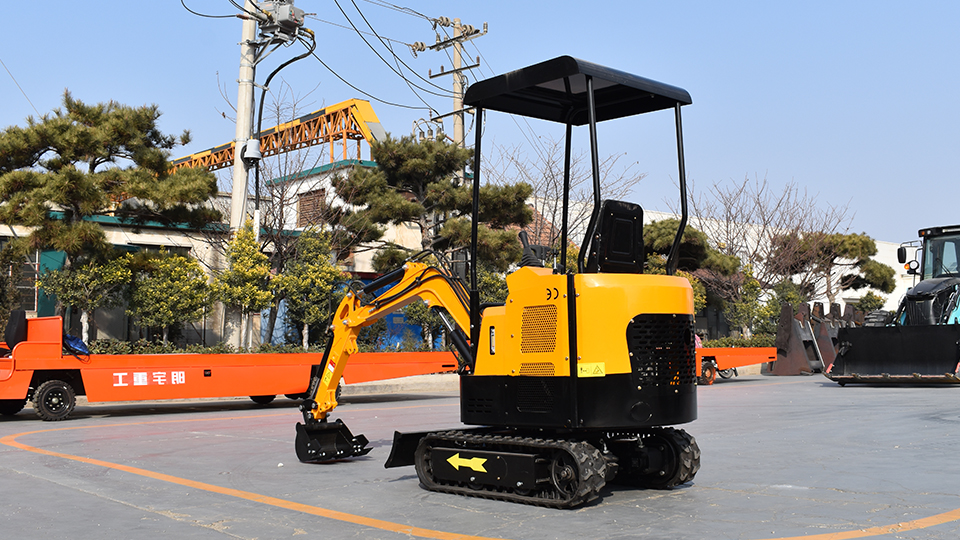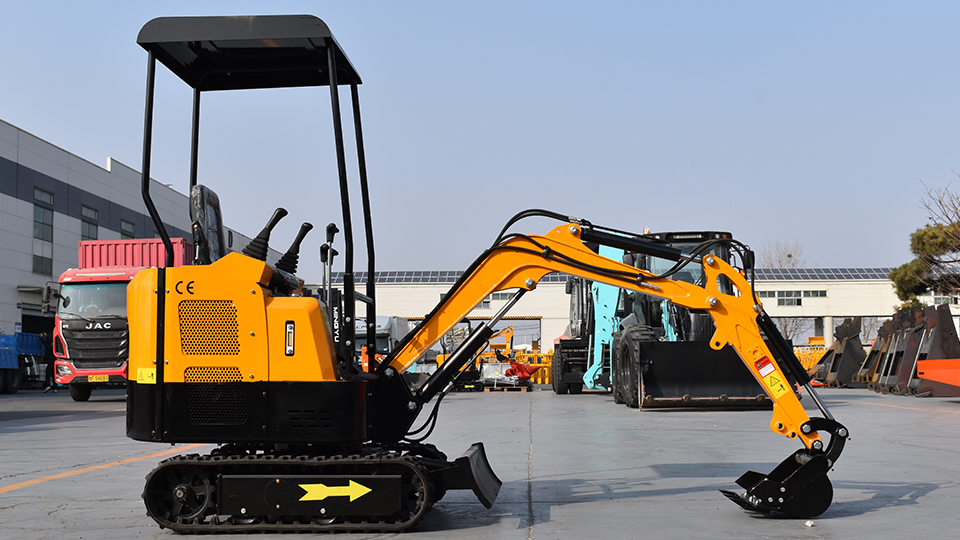I. Introduction
II. A. The Evolving Landscape of Construction and Demand for Compact Equipment
B. The Rise of Small Excavators: Versatility and Efficiency
C. Thesis Statement: How advanced technologies are transforming small excavators into highly productive, versatile, and sustainable machines, expanding their operational capabilities and economic value.
II. Evolution of Small Excavators: Beyond Basic Digging A. From Simple Machines to Sophisticated Tools
B. Key Drivers for Innovation: Urbanization, Environmental Regulations, Labor Shortages, Efficiency Demands
C. Defining "Small Excavator" for this Context (e.g., <10 metric tons operating weight)
III. Core Advanced Technologies Enhancing Performance A. Hydraulic Systems and Controls:
1. Load-Sensing Hydraulics: Precision and Efficiency
2. Proportional Auxiliary Hydraulics: Fine Control for Attachments
3. Flow Sharing and Priority Valves: Simultaneous, Smooth Operations
4. Advanced Control Systems (e.g., electro-hydraulic joysticks, configurable controls)
B. Engine and Power Systems:
1. Tier 4 Final/Stage V Compliance: Emissions Reduction Technologies (DPF, SCR, DOC)

2. Auto Idle/Auto Shutdown: Fuel Efficiency and Reduced Wear
3. Eco-Modes and Power Modes: Optimizing Performance for Tasks
C. Telematics and Connectivity:
1. GPS Tracking and Geofencing: Security and Asset Management
2. Remote Diagnostics and Predictive Maintenance: Minimizing Downtime
3. Fuel Monitoring and Utilization Reports: Operational Insights
4. Integration with Fleet Management Software
IV. Advanced Features for Enhanced Versatility and Operator Comfort A. Advanced Attachment Integration:
1. Hydraulic Quick Couplers: Rapid Attachment Changes
2. Tiltrotators: Multi-Axis Movement and Precision Grading
3. Specialized Attachments: Breakers, Augers, Thumbs, Mulchers, Grinders, etc.
4. Attachment Recognition Systems
B. Operator Assist Technologies:
1. 2D/3D Grade Control Systems: Accuracy and Efficiency (e.g., Leica, Topcon, Trimble integration)
2. Dig Depth Indicators and Auto-Dig Functions
3. Swing Limiters and Height Limiters: Safety in Confined Spaces
C. Operator Environment and Ergonomics:
1. ROPS/FOPS Cab Designs: Safety and Visibility
2. Ergonomic Controls and Adjustable Seating
3. HVAC Systems and Noise Reduction
4. Advanced Displays and User Interfaces
V. The Future of Small Excavators: Electrification and Autonomy A. Electrification (Battery-Electric and Hybrid Models):
1. Benefits: Zero Emissions, Reduced Noise, Lower Operating Costs
2. Challenges: Battery Life, Charging Infrastructure, Initial Cost
3. Current Market Offerings and Projections
B. Automation and Remote Control:
1. Remote Operation for Hazardous Environments
2. Semi-Autonomous Functions (e.g., auto-dig, auto-dump)
3. The Path to Full Autonomy in Compact Equipment
VI. Economic and Environmental ImpactA. Increased Productivity and Reduced Labor Costs
B. Fuel Efficiency and Lower Emissions
C. Enhanced Safety and Reduced Risk
D. Versatility Leading to Broader Project Capabilities
VII. ConclusionA. Recap of Key Technological Advancements
B. The Paradigm Shift in Small Excavator Capabilities
C. Future Outlook: Continued Innovation and Specialization

Detailed Introductory Section
Unlocking the Potential of Small Excavators: Advanced Technologies and Features
The landscape of modern construction is continually evolving, driven by an urgent need for greater efficiency, precision, and sustainability. As urban centers expand and infrastructure demands grow, the role of compact construction equipment has become increasingly critical. Among these, the small excavator, once primarily viewed as a utility machine for basic trenching and digging, has undergone a profound transformation. No longer simply scaled-down versions of their larger counterparts, today's small excavators are highly sophisticated machines, bristling with advanced technologies and features that unlock unprecedented levels of versatility, productivity, and operational intelligence.
The traditional perception of an excavator as a brute-force digging tool is rapidly being redefined, particularly in the compact segment. Small excavators, typically ranging in operating weight from 1 to 10 metric tons, are now indispensable across a wide array of applications, from intricate landscaping and utility installations to interior demolition, urban infill projects, and even specialized agricultural tasks. Their compact footprint allows access to confined spaces where larger machinery cannot operate, while their enhanced capabilities enable them to perform tasks with precision and speed that were previously unimaginable for their size.
This paradigm shift is not merely an incremental improvement; it is the direct result of integrating cutting-edge engineering with smart digital solutions. From highly responsive hydraulic systems and sophisticated telematics that provide real-time operational insights, to advanced operator assist features and the burgeoning realm of electrification, these machines are at the forefront of construction innovation. These advancements collectively empower operators to achieve higher levels of accuracy, reduce manual labor, minimize fuel consumption, and significantly enhance safety on the job site.
This article will delve into the advanced technologies and innovative features that are redefining the capabilities of small excavators. We will explore how breakthroughs in hydraulics, engine management, telematics, and operator interfaces are translating into tangible benefits for contractors and project managers. Furthermore, we will examine the transformative potential of emerging trends such as electrification and autonomous operation, painting a comprehensive picture of how these compact powerhouses are not just meeting, but exceeding, the demands of the modern construction environment, truly unlocking their full operational and economic potential.
Post time:Sep-25-2020
